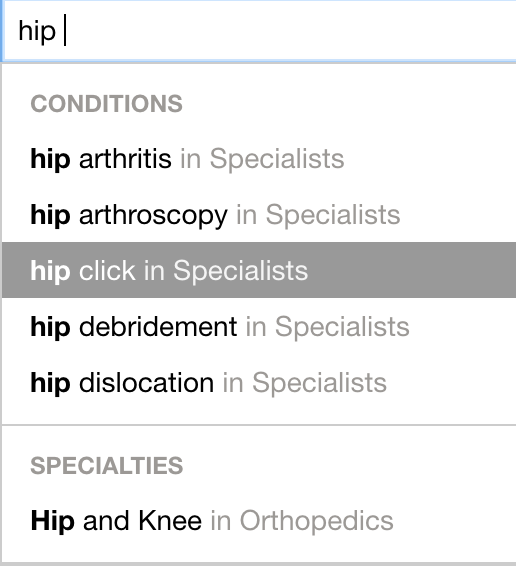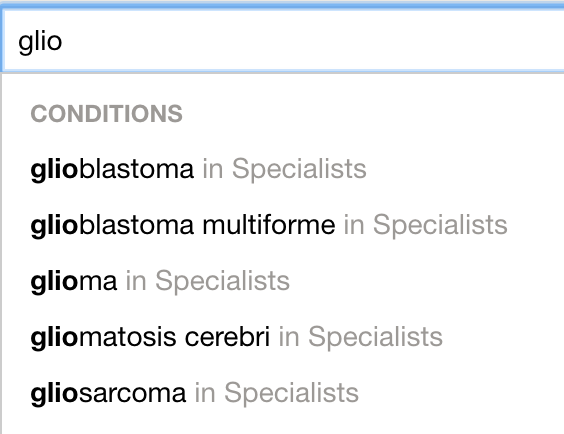Customer Experience the Piedmont Way
// By Jane Weber Brubaker //
 Your brand is the sum of the experiences a customer has with you, says Matt Gove, chief consumer officer at Piedmont Healthcare in Georgia. This definition goes beyond the conventional scope of patient experience, or as Gove consistently refers to it: customer experience. Patient experience historically has been a clinical initiative, with the bulk of resources focused on improving inpatient experience.
Your brand is the sum of the experiences a customer has with you, says Matt Gove, chief consumer officer at Piedmont Healthcare in Georgia. This definition goes beyond the conventional scope of patient experience, or as Gove consistently refers to it: customer experience. Patient experience historically has been a clinical initiative, with the bulk of resources focused on improving inpatient experience.
But most customer experiences happen outside the walls of a hospital. “Our data showed that about 92 percent of our patient interactions were in ambulatory or outpatient settings,” Gove says.

Matt Gove, chief consumer officer at Piedmont Healthcare
Over the past few years, Piedmont has worked to expand the concept of patient experience to the broadest possible definition, embracing every customer interaction, in every setting. The outcome of this work is the Piedmont Way, an enterprise-wide customer-centric framework developed in marketing, in partnership with patient experience, that touches every part of the organization.
The Piedmont Way launched in July 2016. It comprises an ongoing set of initiatives to align the organization with customer expectations, which are set more and more by industries outside of healthcare. “There are great examples out there,” Gove says. “We can be inspired by these examples and come up with something that’s perfect for our customers.”
How can you achieve consistent customer-centricity across a large, diverse organization? Here, we’ll see how marketing took the lead, and is transforming an entire enterprise one touchpoint at a time.
Executive Buy-In Key
Piedmont’s commitment to improving customer experience comes right from the top. Gove and his team have the full support of CEO Kevin Brown, who has championed the customer-centric direction. “There’s no substitute for CEO-level support for this work,” says Gove. “Without that, I’m not sure we ever would’ve gotten it integrated into our overall system strategy.”
But Gove says that marketers should not wait for the CEO to get on board before launching customer-friendly initiatives. “We’d been biting off as many pieces as we could along the way,” he says, listing search and social strategies, consumer-centric brand strategies, and star ratings and reviews. “There’s still a lot of things you can do, but you’re not going to be able to create the plan that drives your system all the way to customer-centricity until you get the leadership team, including the CEO, on board.”
Creating the Vision
In early 2015, customer experience became part of the larger brand communications and external affairs team, headed by Gove. The newly merged team spent the first half of 2015 refining and expanding its understanding of customer experience, and evolving a vision of what it should be. The discovery process involved extensive interviews with staff and patients to gather information and different perspectives. The next step was to create the plan, which became known as the Piedmont Way.
The Piedmont Way
For the balance of the year, Gove’s team, with the help of more than 100 people from all levels of the organization, created the five principles that would guide the Piedmont Way.
“Out of those guiding principles, we brainstormed more than 100 different initiatives that could fit into the Piedmont Way,” says Gove. The list was then pared down to 17, and finally reduced to nine Wave 1 initiatives that the team believed would have the greatest impact. Gove did not share the full list but notes that six of the nine are digitally enabled and require significant technology investments.
Access the #1 Priority
In a 2015 interview with Becker’s, incoming CEO Kevin Brown identified access as one of Piedmont’s biggest challenges. “We have difficulty getting people to the right place at the right time for care,” he said. “As a result, we end up seeing higher volumes in our emergency rooms than there should be.”
The number-one initiative of the Piedmont Way, “seamless transitions,” seeks to transform patient access. “One of the things we’ve learned is [patients] have two primary pain points: access and billing,” says Gove. The goal of seamless transitions is to give patients ease and convenience when trying to find a doctor or schedule an appointment. “No one should leave one of our care settings without having the appointment they need in the next one,” he says.
Challenges of Access in an Integrated Delivery Network
The state of access at Piedmont before this initiative was that there was no consistent way of helping patients get to the next physician or appropriate point of care. One-third of Piedmont’s 1,600 physicians are employed, and the balance are in independent practices. “Every office has a different [referral] process,” says Gove. “Sometimes they print something out for you, or write it down, or give you a name and you have to look it up yourself.”
To enable consistency across the enterprise, Piedmont turned to Kyruus, a patient access solution provider. Kyruus solves the dilemma of whom to refer to. Physicians typically have relationships with specialists who they routinely refer to, but the specialist may not treat a patient’s specific condition. The Kyruus platform enables referring physicians to tap into a larger network of available physicians, with greater granularity.
Provider/Patient Match

Julie Yoo, co-founder and chief product officer at Kyruus
Julie Yoo is co-founder and chief product officer at Kyruus. “We have an archetype of 400 different specialties based on claims data and other industry standard databases that says, for example, ‘Here’s what a typical electrophysiologist looks like in terms of the footprint of diagnoses and procedures that they see, or that they’re trained to do,’” Yoo says.
The platform matches providers and patients based on the 15,000-term Kyruus Clinical Library (KCL). KCL maps to clinical terms, including acronyms, abbreviations, and synonyms. “We mine the millions of searches that are done in our system every month and add new terminology to enhance our library,” says Yoo.
Search results from Kyruus-powered Find A Doc
Positive Impact on Patients and Providers
Yoo notes that only 30 percent to 40 percent of referrals are typically to a named doctor. For the balance of referrals, the ability to search using a greater number of attributes helps both patients and physicians choose the right provider.
The Kyruus platform’s provider/patient matching capabilities enable a health system to better use capacity, which in turn results in a reduction in wait times for patients to get appointments. “We have shown anywhere between a 7 and 17 percent lift in capacity utilization for large systems,” says Yoo.
Kyruus currently powers Piedmont’s consumer-facing Find A Doctor function, as well as its call center. Plans are underway to integrate Kyruus with Epic, with expected launch in August 2017. In future phases, other EHRs within the Piedmont network will be connected, enabling standardized appointment scheduling across the system.
Gove’s chief concerns are that all patients, whether they search for a primary care physician or a specialist, have easy access to scheduling an appointment, a range of options for where they can receive care, and a customer experience they like and become accustomed to. “So much of consumer behavior is habit,” he says. “Why do you buy the same laundry detergent every time? Because you just do.”
Piedmont’s strategy is to offer a full range of options that meet consumer needs for ease and convenience when they seek care. “The point of this is to make access to Piedmont care easy, simple, and different than what they experience in any other healthcare setting,” says Gove.
Access is the first major initiative of the Piedmont Way. Others include adding turn-by-turn wayfinding to Piedmont’s app, and revamping its billing processes. “We’ve come to the conclusion that every single place you touch your customer is important,” Gove says. “There isn’t one place that deserves more attention than others. It’s all important. It all holds great promise—and the great risk is you don’t get it right.”
Jane Weber Brubaker is a contributing editor at eHealthcare Strategy & Trends and chair of the eHealthcare Leadership Awards.





